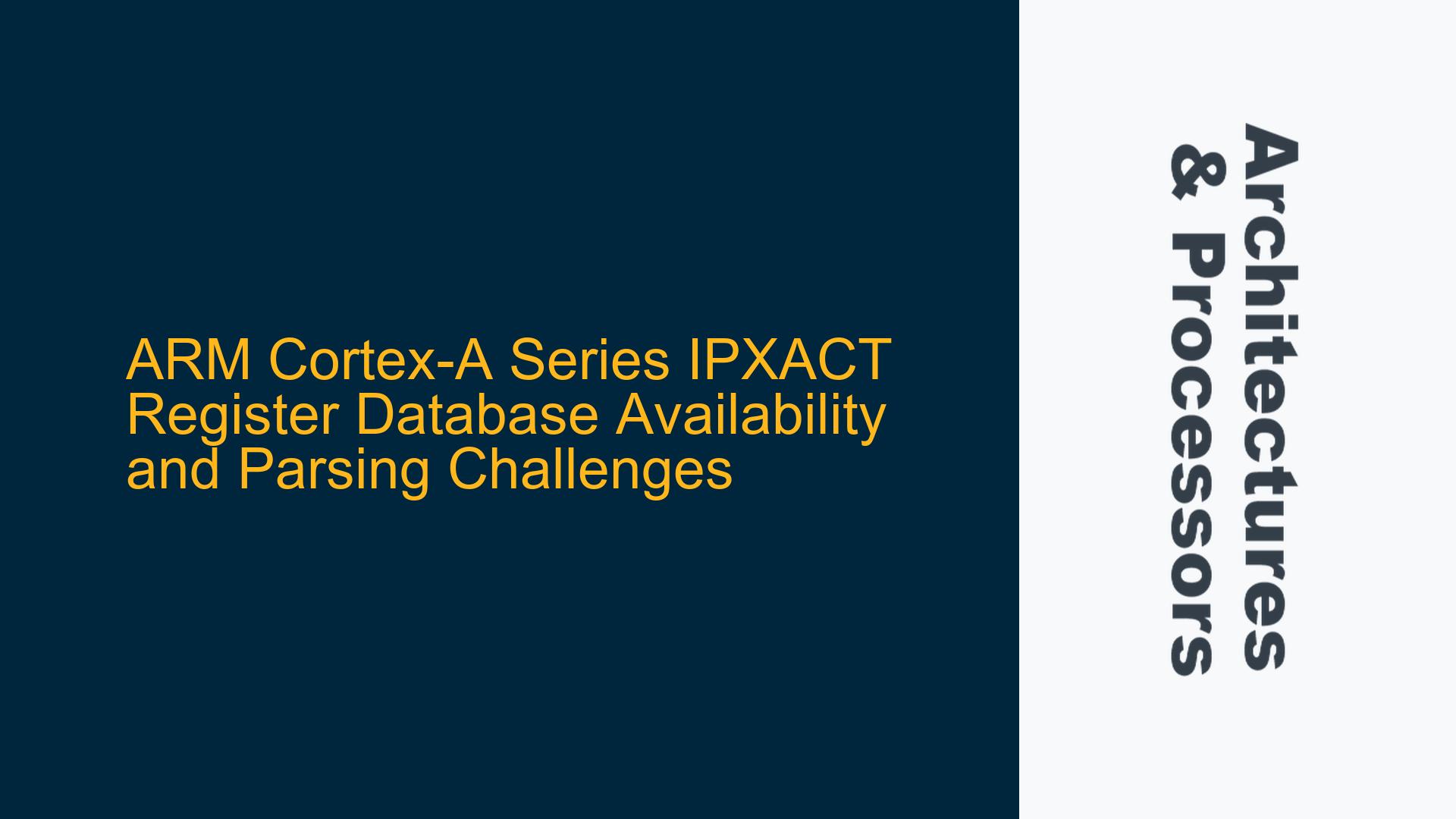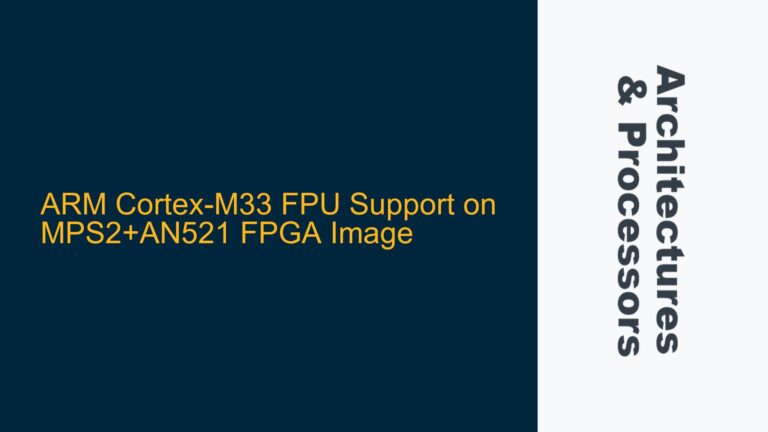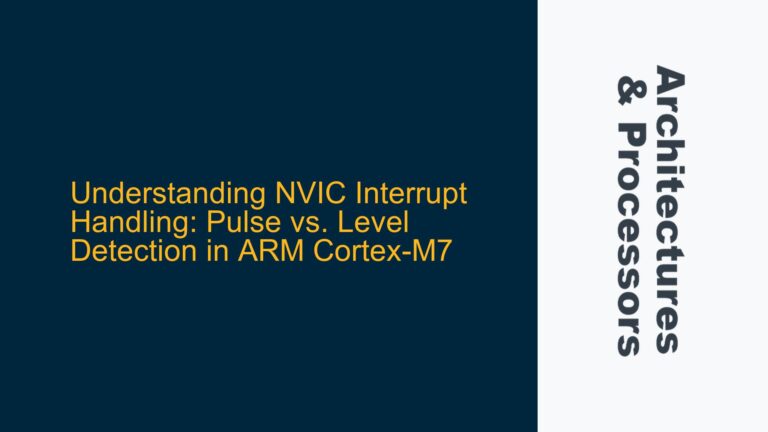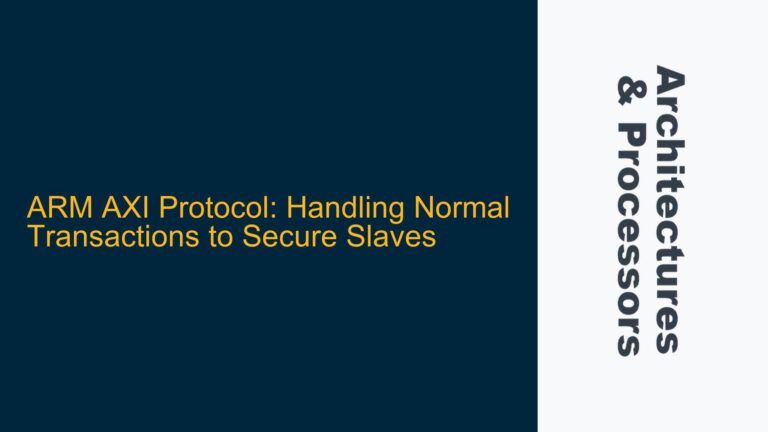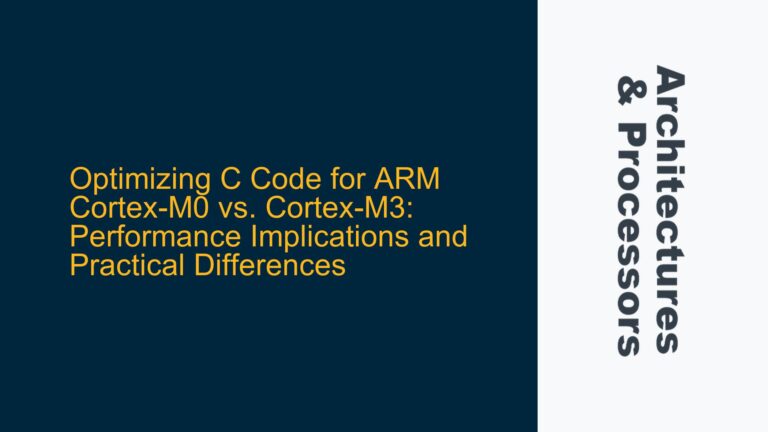ARM Cortex-A Series Register Database Parsing Challenges
The ARM Cortex-A series processors, such as the Cortex-A72, Cortex-A78, and Cortex-A53, are widely used in high-performance embedded systems. These processors implement a variety of registers, some of which are common across different microarchitectures, while others are specific to certain revisions of the ARM architecture. For example, the Cortex-A72 is based on the ARMv8.0-A architecture, whereas the Cortex-A78 is based on the ARMv8.2-A architecture. This architectural evolution introduces new registers and bitfields that were previously marked as reserved (RES0 or RES1) in earlier versions.
The Technical Reference Manuals (TRMs) provided by ARM contain detailed information about these registers and their bitfields. However, the TRMs are typically distributed as PDF documents, which are not easily parseable by software tools. Even after converting these PDFs to text, the lack of a consistent format across different TRMs makes it difficult to automate the extraction of register information. This inconsistency is particularly problematic for developers who need to generate software that can dynamically adapt to the specific register set implemented by a given ARM Cortex-A series processor.
The challenge is further compounded by the fact that different microarchitectures may implement different subsets of registers and bitfields. For example, a bitfield that is valid in the Cortex-A78 (based on ARMv8.2-A) may have been reserved in the Cortex-A72 (based on ARMv8.0-A). This variability necessitates a machine-readable database that can accurately represent the register sets for each microarchitecture, allowing software to query and adapt to the specific hardware configuration at runtime.
Lack of Machine-Readable IPXACT Files for ARM Cortex-A Series
One of the primary issues is the absence of machine-readable IPXACT files or similar databases for the ARM Cortex-A series processors. IPXACT is an XML-based standard developed by the SPIRIT Consortium (now part of Accellera) for describing electronic components and their registers. It provides a structured format for defining registers, bitfields, and their properties, which can be easily parsed by software tools. However, ARM does not currently provide IPXACT files for its Cortex-A series processors, despite the availability of detailed register information in the TRMs.
The lack of IPXACT files means that developers must manually extract register information from the TRMs, which is a time-consuming and error-prone process. This manual extraction is particularly challenging given the differences in formatting between TRMs for different microarchitectures. For example, the TRM for the Cortex-A72 may present register information in a different format compared to the TRM for the Cortex-A78. This inconsistency makes it difficult to develop automated tools that can parse register information across multiple microarchitectures.
Moreover, the absence of a machine-readable database complicates the task of maintaining software that needs to support multiple ARM Cortex-A series processors. Without a standardized format for register information, developers must hand-code the register definitions for each microarchitecture, which can result in hundreds or even thousands of lines of code. This approach is not scalable and increases the risk of errors, particularly when dealing with complex register sets and bitfields.
Solutions for Generating and Utilizing IPXACT-Compatible Register Databases
To address the challenges associated with the lack of machine-readable register databases for ARM Cortex-A series processors, developers can adopt several strategies. One approach is to create custom tools that parse the TRMs and generate IPXACT-compatible XML files. These tools can be designed to handle the differences in formatting between TRMs and produce a consistent output that can be easily parsed by software. While this approach requires an initial investment in tool development, it can significantly reduce the effort required to maintain register definitions for multiple microarchitectures.
Another solution is to leverage existing open-source projects that provide IPXACT-compatible descriptions of ARM processors. For example, the SVD (System View Description) format, which is used by the ARM CMSIS (Cortex Microcontroller Software Interface Standard) project, provides a structured representation of registers and bitfields. While SVD files are not identical to IPXACT files, they can be converted to IPXACT format using available tools. Developers can use these SVD files as a starting point and extend them to include additional registers and bitfields specific to the Cortex-A series processors.
In addition to generating IPXACT-compatible databases, developers should also consider implementing software mechanisms that can dynamically adapt to the specific register set of the target processor. This can be achieved by querying the processor’s configuration registers at runtime and using this information to select the appropriate register definitions from the IPXACT database. This approach allows the software to support multiple microarchitectures without requiring manual updates to the register definitions.
Finally, developers should engage with the ARM community and provide feedback on the need for machine-readable register databases. By highlighting the benefits of IPXACT files or similar formats, developers can encourage ARM to provide these resources as part of the official documentation for Cortex-A series processors. This would not only simplify the development process but also promote consistency and accuracy in the representation of register information across different microarchitectures.
In conclusion, the lack of machine-readable IPXACT files for ARM Cortex-A series processors presents a significant challenge for developers who need to support multiple microarchitectures. By developing custom tools, leveraging existing open-source projects, and implementing dynamic adaptation mechanisms, developers can overcome these challenges and ensure that their software is compatible with a wide range of ARM Cortex-A series processors. Additionally, engaging with the ARM community to advocate for the provision of IPXACT files can help address this issue at the source, benefiting the entire ecosystem of ARM-based embedded systems.
